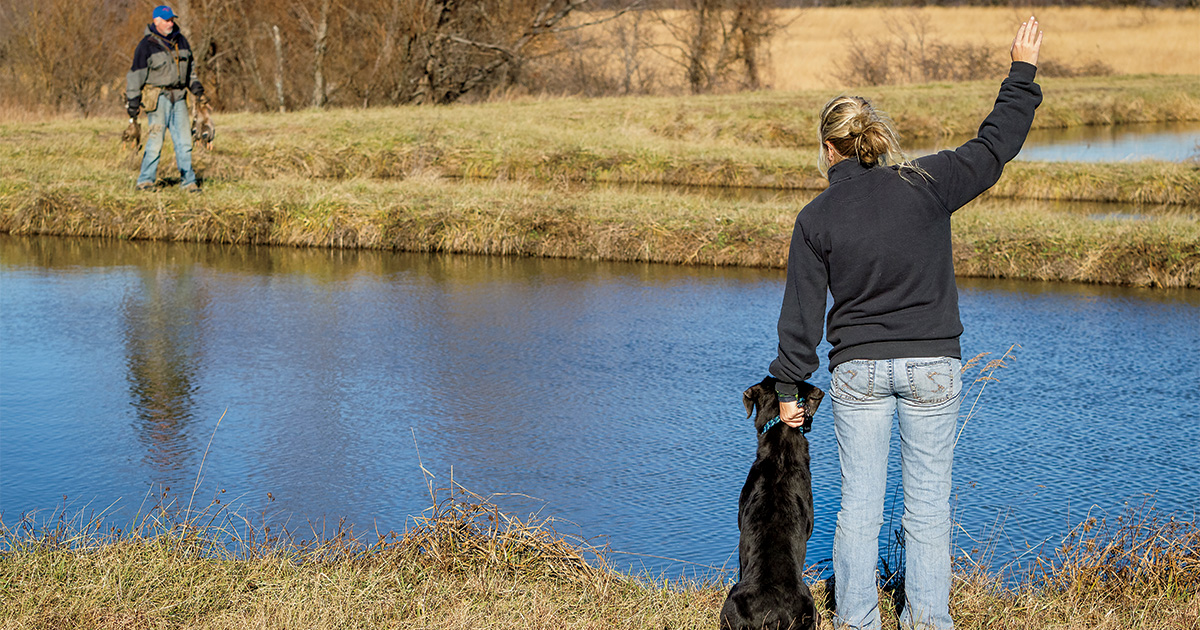
The impending dog days of summer are no excuse for your retriever to lounge around and put on weight. Not only will your duck dog be sluggish during the waterfowl season, he or she also will have an increased risk of exertional rhabdomyolysis.
Exertional rhabdomyolysis, also commonly referred to as tying up, Monday morning sickness and muscle cramps, is the muscle cell imbalance between energy needed and what is in stores. Keeping your duck dog active and in ideal body condition, as well as ensuring he or she receives proper nutrition, can help avoid the condition.
"Exertional rhabdomyolysis usually is associated with an imbalance inside the muscle cells between the amount of energy that's being demanded for the work that a dog is doing and the energy stores he or she has," explains Purina Senior Research Nutritionist Arleigh Reynolds, DVM, PhD, DACVN.
When at rest, a third of expended energy is used to pump sodium out of and potassium into cells in order to maintain a strict balance. In rhabdomyolysis, the balance breaks down, causing sodium to enter the cell and potassium to rush out. Mild rhabdomyolysis can cause some muscle soreness; however, severe cases can cause major muscle damage and could raise the dog's potassium level in the bloodstream enough to stop the heart, potentially proving fatal.
Various things can make a dog susceptible to rhabdomyolysis, but the most common occurrence is when an out-of-shape, underconditioned dog is asked to do something, such as making a long retrieve, for which he or she is unprepared.
Another scenario involves a conditioned dog that runs above his or her normal activity level.
"Either a dog is not conditioned properly to run or a conditioned dog is put in a situation in which the demands of the activity are above his or her capability," says Robert Gillette, DVM, MSE, DACVSMR.
"If you walk your dog every day, you shouldn't go hiking in the mountains four or five times longer than normal. Otherwise, you may end up having a problem," Reynolds advises. "Dogs need to build up gradually, just as humans do. Because dogs want to please their owners, they will often go farther and harder than they should. It falls to the owner to monitor the dog."
Warning signs of rhabdomyolysis include a change in the dog's gait (usually starting at the hind limbs), shaking, slow down or reduction in work, humped back, and tender to the touch. If your dog shows any of these signs, it's important to properly manage the condition by stopping exercise and getting your dog into a cool place. Give him or her small amounts of water and a readily available source of carbohydrates. If your dog doesn't revive quickly within five to 15 minutes, take him or her to a veterinarian.
There are no shortcuts to conditioning, but by keeping your dog active year-round, you can help avoid rhabdomyolysis, as well as injuries, during the waterfowl season. Taking your dog on hourlong hikes twice weekly, practicing basic commands and retrieves, and swimming or running through water are good examples of keeping him or her properly conditioned.
Reynolds and Gillette also recommend feeding a high-protein/high-fat diet, such as Purina Pro Plan SPORT Performance 30/20 Formula, which helps to optimize oxygen metabolism for increased endurance and maintain lean muscle mass. A high-carbohydrate diet should be avoided. To learn more about the Purina Pro Plan SPORT nutritional platform, please visit proplan.com/dogs/platforms/sport.






